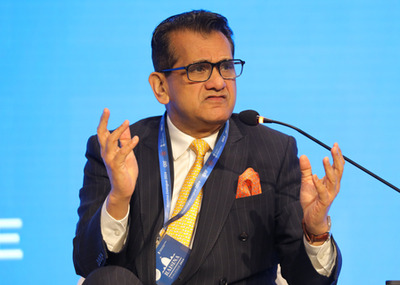What Happens When You Stop EPF Contributions? Know Its Impact on Your Savings
The Employees’ Provident Fund (EPF) is one of the most trusted long-term savings tools for salaried employees in India. But what happens if you stop contributing to your EPF account ? Whether it’s due to a job change, a career break, or moving to an organisation not covered under the EPF Act, halting contributions can directly impact your retirement goals. Here’s a detailed look at what really happens when your EPF contributions stop - and why managing it smartly matters.
When Do EPF Contributions Stop?
Your EPF contribution automatically halts the moment you leave a job that participates in the EPF scheme or join an employer not registered under the EPF Act. While contributions stop, your account remains active for a certain period and continues to earn EPF interest as per the current rates declared by the Employees’ Provident Fund Organisation (EPFO).
However, after a specific duration of inactivity, your account’s status changes - which affects both your savings and the interest you earn.
How Long Does Your EPF Earn Interest After Inactivity?
If there are no EPF contributions for 36 months (three years), the account becomes “inoperative.” Until that point, your funds continue to earn interest at the prevailing rate. After three years, however, no new interest is added to your balance.
The good news? Your money remains safe with the EPFO. Even if your account becomes inactive, your accumulated balance doesn’t disappear and can be withdrawn at any time once you meet the eligibility criteria.
Tax Implications of Stopping EPF Contributions
If you decide to withdraw your EPF amount before completing five continuous years of service, the withdrawal becomes taxable. Both your contribution and your employer’s share, along with the interest accrued, are taxed as per your income slab.
On the other hand, if your EPF balance remains unwithdrawn and continues to earn interest during the active period, it remains tax-free. Hence, managing your EPF timeline wisely can make a big difference in how much you actually save after taxes.
Why You Should Transfer Your EPF Account Instead of Leaving It Dormant
When you switch jobs, it’s always better to transfer your EPF balance rather than let the old account sit idle. Thanks to the Universal Account Number (UAN), you can easily link all your EPF accounts and transfer balances through the EPFO portal.
This not only ensures your service history and tax benefits are preserved but also helps your retirement savings grow seamlessly without breaks. A consolidated EPF account is easier to manage, transparent, and far more beneficial in the long run.
The Hidden Cost of Ignoring Your EPF Account
Neglecting your EPF account can lead to more than just lost interest - it can weaken your long-term wealth. In the years leading up to retirement, even a small pause in contributions can significantly reduce your final corpus due to the power of compounding.
Additionally, outdated KYC details or bank information can make reclaiming old balances a hassle later. Regularly updating your EPF details and merging multiple accounts not only ensures smooth withdrawals but also helps maintain financial discipline and maximise your retirement savings.
Keep Your EPF Active for a Secure Future
Stopping EPF contributions might seem harmless in the short term, but it can have lasting effects on your retirement planning. Whether you’re changing jobs or taking a break, make sure to either transfer or manage your EPF account properly. Staying proactive ensures your EPF savings continue to grow - helping you build a stronger, tax-efficient retirement corpus for the future.

When Do EPF Contributions Stop?
Your EPF contribution automatically halts the moment you leave a job that participates in the EPF scheme or join an employer not registered under the EPF Act. While contributions stop, your account remains active for a certain period and continues to earn EPF interest as per the current rates declared by the Employees’ Provident Fund Organisation (EPFO).
However, after a specific duration of inactivity, your account’s status changes - which affects both your savings and the interest you earn.
How Long Does Your EPF Earn Interest After Inactivity?
If there are no EPF contributions for 36 months (three years), the account becomes “inoperative.” Until that point, your funds continue to earn interest at the prevailing rate. After three years, however, no new interest is added to your balance.
The good news? Your money remains safe with the EPFO. Even if your account becomes inactive, your accumulated balance doesn’t disappear and can be withdrawn at any time once you meet the eligibility criteria.
You may also like
 Knives Out director addresses mystery series' future after disappointing Netflix update
Knives Out director addresses mystery series' future after disappointing Netflix update- Skoda offers October 2025: Up to ₹4.5 lakh discount on Kushaq, Slavia, Kylaq and Kodiaq
- Eamonn Holmes halts GB News as Israeli hostages released by Hamas
 Rajasthan achieves lowest battery energy storage price in India: Amitabh Kant
Rajasthan achieves lowest battery energy storage price in India: Amitabh Kant- 'Bringing them home': How Israeli media paid tribute to Donald Trump; hails him for freeing Gaza hostages
Tax Implications of Stopping EPF Contributions
If you decide to withdraw your EPF amount before completing five continuous years of service, the withdrawal becomes taxable. Both your contribution and your employer’s share, along with the interest accrued, are taxed as per your income slab.
On the other hand, if your EPF balance remains unwithdrawn and continues to earn interest during the active period, it remains tax-free. Hence, managing your EPF timeline wisely can make a big difference in how much you actually save after taxes.
Why You Should Transfer Your EPF Account Instead of Leaving It Dormant
When you switch jobs, it’s always better to transfer your EPF balance rather than let the old account sit idle. Thanks to the Universal Account Number (UAN), you can easily link all your EPF accounts and transfer balances through the EPFO portal.
This not only ensures your service history and tax benefits are preserved but also helps your retirement savings grow seamlessly without breaks. A consolidated EPF account is easier to manage, transparent, and far more beneficial in the long run.
The Hidden Cost of Ignoring Your EPF Account
Neglecting your EPF account can lead to more than just lost interest - it can weaken your long-term wealth. In the years leading up to retirement, even a small pause in contributions can significantly reduce your final corpus due to the power of compounding.
Additionally, outdated KYC details or bank information can make reclaiming old balances a hassle later. Regularly updating your EPF details and merging multiple accounts not only ensures smooth withdrawals but also helps maintain financial discipline and maximise your retirement savings.
Keep Your EPF Active for a Secure Future
Stopping EPF contributions might seem harmless in the short term, but it can have lasting effects on your retirement planning. Whether you’re changing jobs or taking a break, make sure to either transfer or manage your EPF account properly. Staying proactive ensures your EPF savings continue to grow - helping you build a stronger, tax-efficient retirement corpus for the future.









